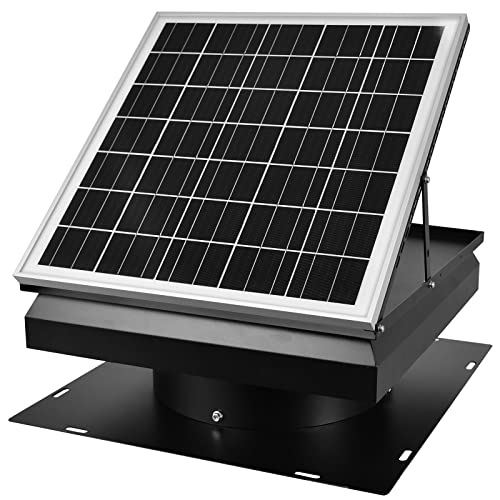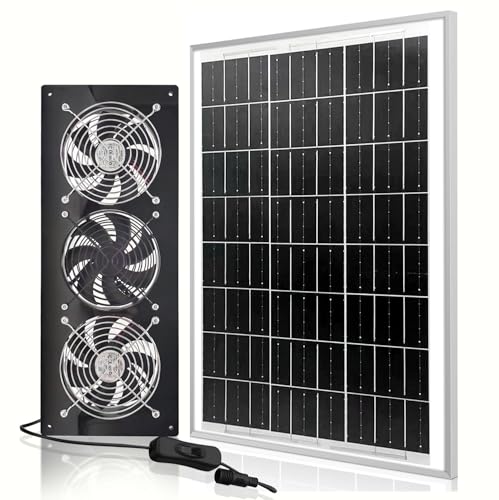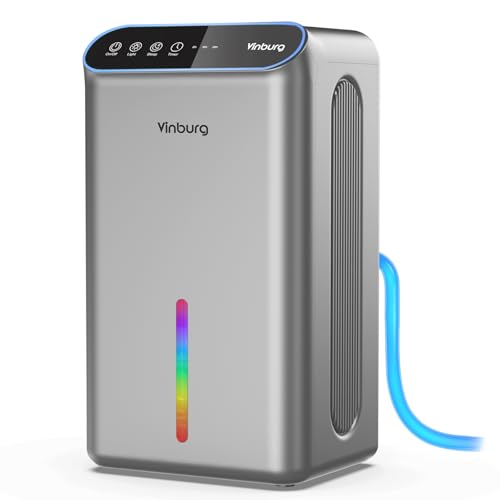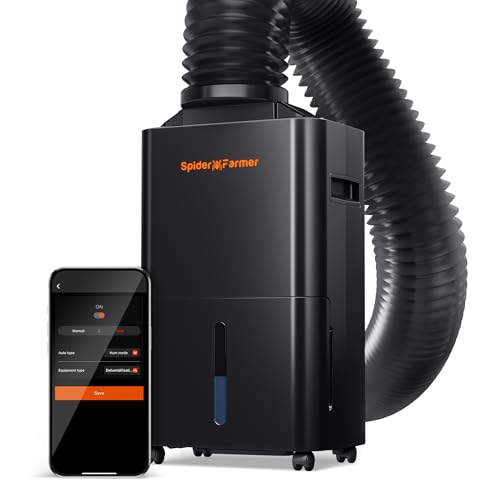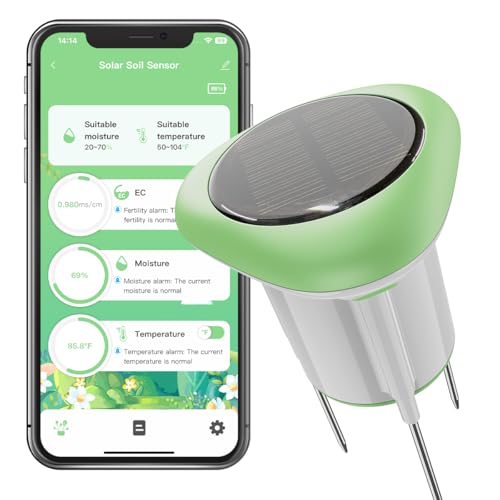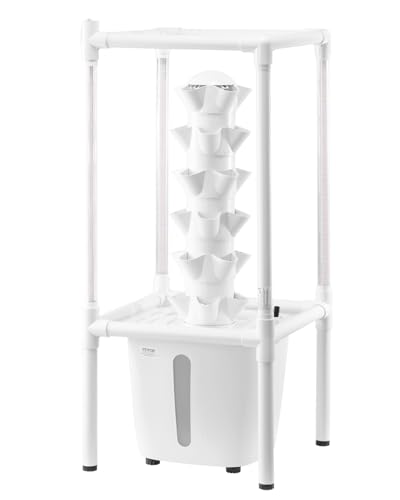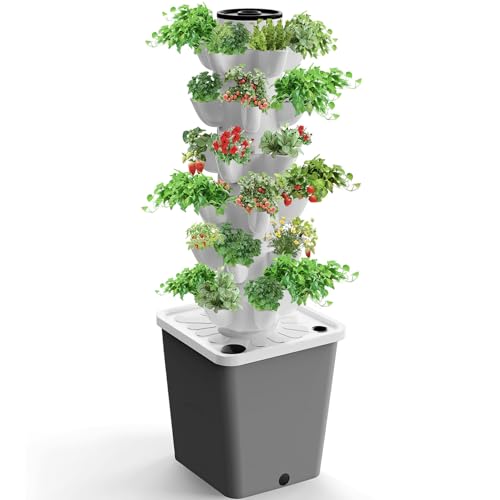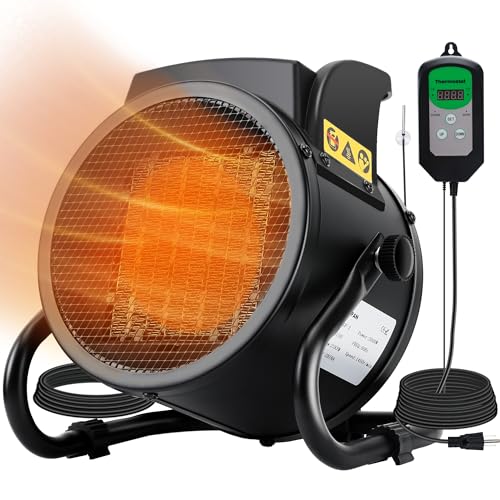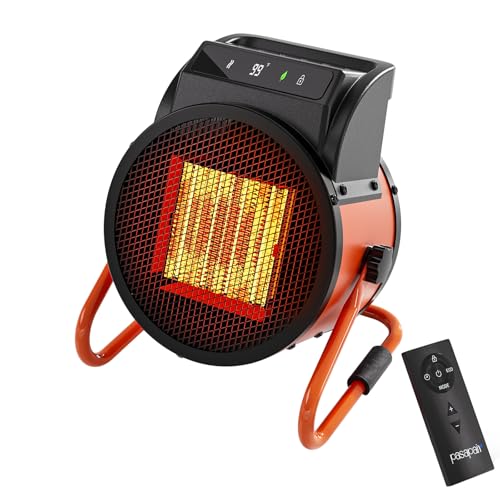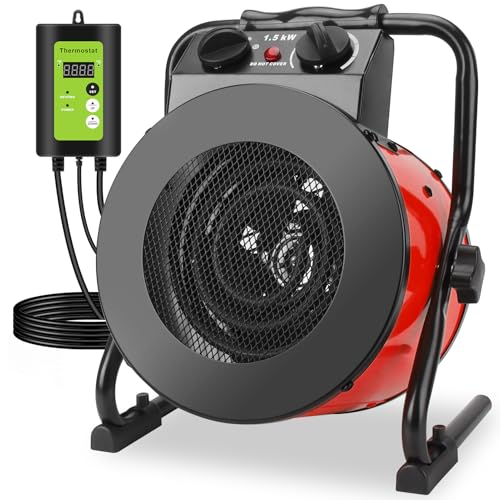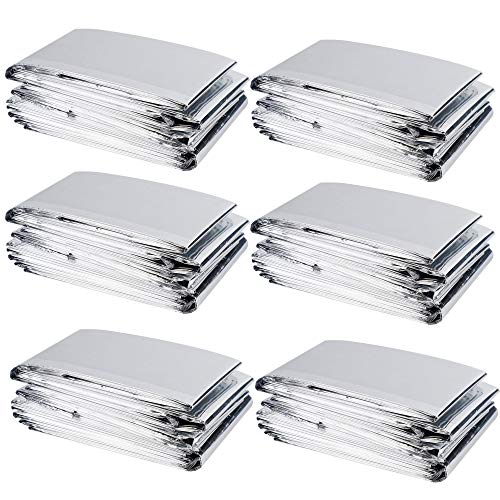In the ever-evolving world of agriculture, the concept of “greenhouse” has transcended its physical structure to symbolize a sustainable and innovative approach to cultivation. Meet Sarah, a passionate and dedicated organic farmer, who embarked on a quest to revolutionize her greenhouse practices. Her journey led her to uncover ingenious hacks that not only improved her yields but also enriched her commitment to environmental stewardship. In this article, we delve into Sarah’s top 10 greenhouse hacks that can transform any grower’s approach to cultivating bountiful and eco-conscious harvests.

Top 10 Greenhouse Hacks for Thriving Harvests
Hack 1: Overcoming Pest Infestations
Problem: Pest Infestations Threaten Harvests
Introducing Sarah, an aspiring organic farmer committed to growing pesticide-free crops. However, her efforts were consistently undermined by pest infestations that compromised her harvests. Aphids, mites, and other pests were wreaking havoc on her plants, leading to diminished yields and quality.
Solution: Beneficial Insect Havens
Sarah’s determination led her to embrace a natural approach: beneficial insect havens. She strategically introduced predator insects like ladybugs, lacewings, and parasitic wasps into her greenhouse. These insects formed a symbiotic relationship with her plants, feeding on harmful pests and providing a natural defense system.
Best Sellers on Amazon: Beneficial Insect Havens
Check this article for more details: Insect Screens Success Story: How Alex Achieved a Bug-Free Oasis for Outdoor Living
Elaboration on the Hack:
The introduction of beneficial insect havens transformed Sarah’s greenhouse into a thriving ecosystem. She created designated areas within the greenhouse where these insects could establish their populations. This required careful consideration of plant varieties and planting schedules to ensure a continuous supply of food for the predator insects.
Sarah monitored the predator-prey balance through regular observations and data collection. If pest populations surged, the predator insects responded accordingly, maintaining a sustainable control mechanism. This approach not only reduced the need for chemical pesticides but also contributed to overall biodiversity in her greenhouse.
Impact and Benefits:
Sarah’s adoption of beneficial insect havens revolutionized her organic farming journey. Her crops were healthier, and her yields significantly improved. The hack not only addressed her immediate pest challenges but also aligned with her commitment to sustainable and environmentally friendly farming practices.
As word spread within the organic farming community, more farmers embraced this natural pest management approach. Sarah’s innovation demonstrated that working with nature, rather than against it, could result in healthier crops and ecosystems. Her greenhouse became a model for integrating biodiversity and balance into agriculture, paving the way for a greener and more harmonious farming future.
Hack 2: Harnessing Solar Energy
Problem: Limited Energy Resources
With greenhouse operations demanding energy for temperature regulation and lighting, Sarah sought ways to reduce her carbon footprint. Conventional energy sources strained both the environment and her budget.
Solution: Solar-Powered Ventilation Fans
Recognizing the power of renewable energy, Sarah installed solar-powered ventilation fans in her greenhouse. These fans harnessed sunlight to regulate temperature, creating an eco-friendly cooling system that lowered energy consumption.
Best Sellers on Amazon: Solar-Powered Ventilation Fans
Check this article for more details:
Elaboration on the Hack:
Sarah’s greenhouse was now equipped with solar panels that absorbed sunlight, converting it into electricity to power the ventilation fans. This reduced her reliance on non-renewable energy sources and minimized the greenhouse’s impact on the environment.
The solar-powered fans operated silently, maintaining optimal temperature and air circulation without emitting harmful greenhouse gases. Sarah’s greenhouse was now a model of sustainable energy integration, showcasing the potential for a greener agricultural future.
Impact and Benefits:
The implementation of solar-powered ventilation fans significantly reduced Sarah’s energy bills while aligning with her commitment to sustainable practices. Her greenhouse became an inspiration for others looking to harness renewable energy for agricultural operations, proving that innovation could lead to both environmental and financial gains.
Hack 3: Optimizing Water Usage
Problem: Water Scarcity Challenges
With water becoming an increasingly precious resource, Sarah faced the challenge of ensuring efficient water usage in her greenhouse. Conventional irrigation methods often led to water wastage and inefficient distribution.
Solution: Drip Irrigation Systems
Sarah turned to drip irrigation systems, a solution that minimized water wastage and provided targeted hydration to her plants. This approach ensured that each plant received the right amount of water, reducing water consumption and promoting plant health.
Best Sellers on Amazon: Drip Irrigation Systems
Check this article for more details:
Elaboration on the Hack:
Sarah installed a network of drip irrigation tubes and emitters in her greenhouse. This system delivered water directly to the base of each plant, preventing water loss through evaporation and runoff. With better control over water distribution, her plants thrived while water wastage was minimized.
The drip irrigation system also reduced the likelihood of disease spread since leaves remained dry, preventing conditions conducive to fungal growth. This innovative water-saving approach aligned with Sarah’s commitment to responsible resource management.
Impact and Benefits:
The adoption of drip irrigation systems not only conserved water but also improved Sarah’s overall crop health and yield. Her greenhouse became a beacon of water-efficient farming, inspiring others to rethink their irrigation methods for the sake of a more sustainable future.
ChatGPT
Hack 4: Enhancing Germination
Problem: Slow Germination Rates
Germination was a critical phase for Sarah’s crops, but she often faced delays and uneven germination rates. This affected the timing of her planting schedule and subsequently her harvests.
Solution: Seedling Heat Mat with Thermostat
Sarah introduced seedling heat mats with thermostats to her greenhouse. These mats provided consistent bottom heat, creating optimal conditions for seed germination. The controlled temperature accelerated the germination process, leading to more synchronized and faster growth.
Best Sellers on Amazon: Seedling Heat Mat with Thermostat
Check this article for more details:
Elaboration on the Hack:
The seedling heat mat, combined with a thermostat, allowed Sarah to set and maintain the ideal germination temperature for different plant varieties. This precise control reduced the risk of seedling diseases and provided a head start for her crops.
With faster and uniform germination, Sarah’s planting schedule became more efficient, resulting in more predictable harvest times and improved crop yields.
Impact and Benefits:
The seedling heat mat with thermostat transformed Sarah’s germination process, ensuring a higher success rate and healthier seedlings. Her greenhouse’s productivity improved, setting the stage for more robust and timely harvests. This hack not only saved her time but also enhanced the overall quality of her crops.
Hack 5: Preventing Excess Humidity
Problem: High Humidity Stresses Plants
Excessive humidity was a recurring challenge in Sarah’s greenhouse, leading to stress and disease susceptibility in her plants. Mold and fungal growth further compounded the issue.
Solution: Greenhouse Dehumidifier
To address this, Sarah incorporated a greenhouse dehumidifier into her setup. This device efficiently removed excess moisture from the air, maintaining a healthier humidity level for her plants.
Best Sellers on Amazon: Greenhouse Dehumidifier
Check this article for more details: Alex’s Success Story: How a High-Efficiency Dehumidifier Revolutionized His Greenhouse Yield
Elaboration on the Hack:
The greenhouse dehumidifier not only maintained optimal humidity levels but also promoted airflow, preventing stagnant air pockets where mold and diseases thrive. Sarah’s plants flourished in the controlled environment, leading to improved growth and resilience.
By tackling excess humidity, Sarah’s greenhouse became a sanctuary for healthy plants, and her battle against fungal diseases became much more manageable.
Impact and Benefits:
The addition of a greenhouse dehumidifier created an environment where plants could thrive without the constraints of excessive humidity. Sarah’s crops were happier and more robust, resulting in higher yields and enhanced plant quality. This hack reduced the need for constant vigilance against mold and fungal issues, allowing her to focus on other aspects of greenhouse management.
Hack 6: Monitoring Soil Moisture
Problem: Inaccurate Watering Practices
Sarah struggled with finding the right balance in watering her plants. Overwatering and underwatering were common issues, impacting plant health and growth.
Solution: Wireless Soil Moisture Sensor
Sarah adopted wireless soil moisture sensors that provided real-time data on soil moisture levels. These sensors alerted her when it was time to water, ensuring that her plants received the right amount of hydration.
Best Sellers on Amazon: Wireless Soil Moisture Sensor
Check this article for more details: Alex’s Success Story: How a High-Efficiency Dehumidifier Revolutionized His Greenhouse Yield
Elaboration on the Hack:
The wireless soil moisture sensors were strategically placed in different areas of the greenhouse, allowing Sarah to monitor moisture variations across her crops. She received notifications on her smartphone, enabling her to water her plants precisely when needed.
This hack not only optimized water usage but also relieved Sarah from the guesswork of watering, leading to healthier and more productive plants.
Impact and Benefits:
The wireless soil moisture sensors revolutionized Sarah’s watering routine, resulting in healthier plants with fewer instances of stress due to incorrect watering practices. Her crops flourished, and her efforts were more focused on other essential aspects of greenhouse management. The accuracy and efficiency of this hack translated to better plant growth and more consistent yields.
Hack 7: Boosting Rooting Success
Problem: Poor Root Development
Rooting cuttings was a hit-or-miss process for Sarah. Many times, the cuttings failed to develop strong root systems, leading to transplant shock and low survival rates.
Solution: Rooting Hormone Gel
To overcome this challenge, Sarah turned to rooting hormone gel. This gel contained growth-promoting hormones that stimulated root development, increasing the chances of successful rooting.
Best Sellers on Amazon: Rooting Hormone Gel
Check this article for more details: Alex’s Success Story: How a High-Efficiency Dehumidifier Revolutionized His Greenhouse Yield
Elaboration on the Hack:
Sarah applied rooting hormone gel to the cut ends of her plant cuttings before planting them in propagation trays. The hormones encouraged the formation of roots, ensuring a higher success rate for her cuttings.
With stronger root systems, the transplanted seedlings experienced less shock and established themselves more quickly, ultimately leading to healthier and more vigorous plants.
Impact and Benefits:
The introduction of rooting hormone gel transformed Sarah’s propagation efforts. Her success rates for rooting cuttings increased significantly, resulting in healthier and more resilient plants. This hack not only saved her time and resources but also contributed to the overall success of her greenhouse endeavors.
Hack 8: Supporting Climbing Plants
Problem: Limited Space for Climbers
Climbing plants posed a challenge in Sarah’s greenhouse due to limited space for them to grow vertically. Without proper support, these plants often sprawled, reducing light exposure and impeding airflow.
Solution: Trellis Netting for Climbing Plants
To optimize space and encourage vertical growth, Sarah installed trellis netting in her greenhouse. This netting provided a sturdy support structure for climbing plants, enabling them to reach their full potential without taking up valuable ground space.
Best Sellers on Amazon: Trellis Netting for Climbing Plants
Check this article for more details: Alex’s Success Story: How a High-Efficiency Dehumidifier Revolutionized His Greenhouse Yield
Elaboration on the Hack:
Sarah strategically hung the trellis netting from the greenhouse roof, creating designated areas for climbing plants. As the plants grew, she trained them to weave through the netting, maximizing vertical growth and light exposure.
This hack not only created a visually appealing arrangement but also increased the overall capacity of her greenhouse, allowing her to grow more plants in the available space.
Impact and Benefits:
The incorporation of trellis netting transformed Sarah’s greenhouse into a vertical oasis. Climbing plants thrived, receiving ample light and airflow, which translated to healthier growth and higher yields. This hack showcased Sarah’s creativity in space optimization and contributed to the efficient utilization of her greenhouse’s limited area.
Hack 9: Regulating Sunlight Exposure
Problem: Excessive Sunlight Stress
While sunlight is essential for plant growth, too much direct exposure led to heat stress and sunburn in Sarah’s greenhouse. Managing light intensity and duration was a challenge.
Solution: Greenhouse Shade Cloth
To control sunlight exposure, Sarah implemented a greenhouse shade cloth. This cloth provided adjustable shading, allowing her to create the ideal light conditions for her plants while preventing excessive heat buildup.
Best Sellers on Amazon: Greenhouse Shade Cloth
Check this article for more details: Case Study: Alex’s Garden Oasis – How Shade Nets Elevated Plant Growth and Aesthetic Appeal
Elaboration on the Hack:
Sarah attached the greenhouse shade cloth to the roof and sides of her greenhouse. The cloth’s adjustable design allowed her to customize shading levels based on the specific needs of different plant varieties.
By regulating sunlight exposure, Sarah’s plants remained vibrant and healthy, even during the hottest days. The greenhouse shade cloth contributed to a more controlled and conducive growing environment.
Impact and Benefits:
The introduction of a greenhouse shade cloth provided Sarah with the ability to tailor light conditions to suit her plants’ preferences. This hack prevented sun-related stress and damage, resulting in higher-quality crops and improved plant resilience. The shade cloth’s adaptability added a new layer of control to Sarah’s greenhouse management, enhancing her overall success as a grower.
Hack 10: Exploring Vertical Farming
Problem: Limited Growing Space
With limited ground area in her greenhouse, Sarah sought innovative ways to maximize her growing capacity without compromising plant health and access.
Solution: Vertical Hydroponic Systems
To address this challenge, Sarah embraced vertical hydroponic systems. These systems allowed her to cultivate plants vertically, stacking planters on top of each other and utilizing the height of the greenhouse.
Best Sellers on Amazon: Vertical Hydroponic Systems
Check this article for more details: Case Study: Alex’s Urban Oasis – Maximizing Yield and Space with Vertical Hydroponic Systems
Elaboration on the Hack:
Sarah set up vertical hydroponic systems that featured multiple tiers of planters. Each planter was equipped with a hydroponic growing medium and a nutrient delivery system. This arrangement enabled her to grow a variety of plants in a compact space.
Vertical farming not only maximized space but also promoted efficient water and nutrient utilization. Sarah’s greenhouse became a testament to the possibilities of urban farming and sustainable food production.
Impact and Benefits:
The integration of vertical hydroponic systems revolutionized Sarah’s greenhouse, transforming it into a multi-tiered paradise of thriving plants. This hack showcased her adaptability and willingness to explore innovative approaches to cultivation. Sarah’s greenhouse now produced more crops in less space, contributing to her commitment to sustainable and space-efficient farming practices.
Hack 11: Maintaining Controlled Climate
Problem: Fluctuating Temperatures
Temperature fluctuations posed a challenge for Sarah’s greenhouse, affecting plant growth and health. Extreme heat or cold could lead to stress and decreased productivity.
Solution: Temperature-Controlled Greenhouse
To provide a consistent climate, Sarah invested in a temperature-controlled greenhouse system. This system automatically adjusted temperature and humidity levels based on preset parameters, ensuring optimal conditions for her plants.
Best Sellers on Amazon: Temperature-Controlled Greenhouse
Check this article for more details: Alex’s Success Story: How a Temperature-Controlled Greenhouse Revolutionized Urban Farming
Elaboration on the Hack:
The temperature-controlled greenhouse system integrated sensors, fans, and heating/cooling elements. It maintained a stable environment by responding to external temperature changes, guaranteeing that Sarah’s plants thrived regardless of weather conditions.
With this hack, Sarah’s greenhouse became a haven of stability, providing plants with the perfect growing conditions year-round.
Impact and Benefits:
The adoption of a temperature-controlled greenhouse system improved Sarah’s crop consistency and overall productivity. Plants experienced less stress, resulting in healthier growth and higher yields. This hack showcased her commitment to precision farming and the potential of technology in agriculture.
Hack 12: Ensuring Winter Warmth
Problem: Cold Season Challenges
Winter posed a unique set of challenges for Sarah’s greenhouse. Cold temperatures threatened her crops’ survival, and frost could easily damage delicate plants.
Solution: Greenhouse Heaters
To combat the winter cold, Sarah introduced greenhouse heaters. These heaters provided consistent warmth to the greenhouse, protecting her plants from frost and ensuring their well-being during colder months.
Best Sellers on Amazon: Greenhouse Heaters
Check this article for more details: Emily’s Top 10 Greenhouse Transformation with Heater Hacks
Elaboration on the Hack:
The greenhouse heaters were strategically placed to ensure even heat distribution. Sarah could adjust the temperature settings to match the specific needs of her plants, creating a cozy and conducive environment even when temperatures dropped outside.
With the addition of greenhouse heaters, Sarah’s crops continued to thrive even in the harshest winter conditions.
Impact and Benefits:
The integration of greenhouse heaters extended Sarah’s growing season, allowing her to cultivate crops during winter when traditional outdoor conditions were unfavorable. This hack boosted her greenhouse’s productivity and made a significant impact on her overall yearly yield.
Hack 13: Organizing Space Efficiently
Problem: Limited Storage and Workspace
Keeping her greenhouse organized and efficient was a challenge for Sarah. Cluttered spaces and lack of proper shelving hindered her workflow and access to essential tools.
Solution: Greenhouse Shelving
Sarah incorporated greenhouse shelving units to organize her space efficiently. These shelves provided designated areas for tools, pots, and supplies, allowing her to maintain order and optimize her workspace.
Best Sellers on Amazon: Greenhouse Shelving
Check this article for more details: Alex’s Journey: How Smart Shelving Elevated His Greenhouse Productivity
Elaboration on the Hack:
Sarah set up the greenhouse shelving in a way that maximized vertical space. She used different shelf levels for various purposes, such as storing tools, trays, and potted plants. This organized arrangement streamlined her workflow and made her greenhouse a more functional and productive space.
Impact and Benefits:
The incorporation of greenhouse shelving transformed Sarah’s workspace, creating a more organized and efficient environment. This hack saved her time by reducing the search for tools and supplies, allowing her to focus on tasks that directly contributed to plant growth and care.
Hack 14: Starting Seeds Effectively
Problem: Inconsistent Seedling Success
Starting seeds was a crucial stage for Sarah, but she often faced challenges with low germination rates and weak seedlings.
Solution: Seed Trays
To ensure uniform and healthy seedlings, Sarah introduced seed trays with cell inserts. These trays provided individual compartments for each seed, optimizing germination conditions and seedling growth.
Best Sellers on Amazon: Seed Trays
Check this article for more details: Alex’s Success Story: How Seed Trays Revolutionized Urban Gardening in Small Spaces
Elaboration on the Hack:
The seed trays with cell inserts allowed Sarah to control moisture levels and prevent overcrowding of seedlings. Each seedling had its space, minimizing competition for resources and ensuring consistent growth.
With the introduction of seed trays, Sarah’s seedling success rate improved significantly, setting a strong foundation for her crops.
Impact and Benefits:
The adoption of seed trays revolutionized Sarah’s seed starting process. She achieved higher germination rates and stronger seedlings, ultimately leading to healthier and more productive plants. This hack streamlined her propagation efforts, optimizing her greenhouse’s productivity.
Hack 15: Shielding from Frost
Problem: Frost Threatens Delicate Plants
Frost was a concern for Sarah, especially during the transition from colder to warmer seasons. Delicate plants were at risk of frost damage, affecting their growth and vitality.
Solution: Frost Cloth
To protect her plants from frost, Sarah used frost cloth. This breathable fabric shielded her plants from cold temperatures while allowing light and air to pass through.
Best Sellers on Amazon: Frost Cloth
Check this article for more details: Alex’s Winter Gardening Triumph: How Frost Cloth Turned His Plants Into Cold-Weather Champions
Elaboration on the Hack:
Sarah draped the frost cloth over her plants during frost-prone nights. The cloth’s lightweight and breathable nature ensured that her plants remained insulated without suffocating them.
With frost cloth as part of her arsenal, Sarah’s plants survived temperature drops and thrived through transitional seasons.
Impact and Benefits:
The introduction of frost cloth safeguarded Sarah’s delicate plants from the harsh effects of frost. This hack ensured a smoother transition from colder to warmer seasons, reducing the risk of setbacks due to temperature fluctuations. Sarah’s plants remained resilient and continued to grow despite changing weather conditions.
Hack 16: Nurturing Microgreens
Problem: Microgreen Care
Growing microgreens required careful attention to detail. Sarah struggled to provide optimal conditions for these tiny plants.
Solution: Microgreen Trays
To streamline microgreen cultivation, Sarah introduced microgreen trays. These specialized trays were designed for microgreens, providing the right depth and drainage for their growth.
Best Sellers on Amazon: Microgreen Trays
Check this article for more details: Success Story: Alex’s Microgreen Tray Journey from Urban Gardener to Microgreen Maverick
Elaboration on the Hack:
The microgreen trays simplified the process of growing microgreens. They allowed Sarah to achieve the right balance of moisture and aeration, key factors for successful microgreen growth.
With the help of microgreen trays, Sarah’s microgreens flourished, providing her with a consistent supply of these nutritious greens.
Impact and Benefits:
The incorporation of microgreen trays transformed Sarah’s microgreen cultivation experience. The trays eliminated the guesswork and enabled her to consistently produce high-quality microgreens. This hack optimized her microgreen yield and added a valuable component to her greenhouse’s offerings.
Hack 17: Efficient Hydroponic Setup
Problem: Space-Intensive Hydroponics
Hydroponic systems required space and resources that were sometimes beyond Sarah’s greenhouse capacity.
Solution: Net Pots
To optimize her hydroponic setup, Sarah adopted net pots. These pots allowed plants to grow hydroponically while utilizing less space compared to traditional methods.
Best Sellers on Amazon: Net Pots
Check this article for more details: Case Study: Alex’s Urban Oasis – Maximizing Yield and Space with Vertical Hydroponic Systems
Elaboration on the Hack:
Sarah used net pots in her hydroponic systems to suspend plants above the nutrient solution. This approach eliminated the need for large containers and conserved space, allowing her to grow more plants in the same area.
With net pots, Sarah’s hydroponic setup became more efficient, resource-saving, and conducive to high yields.
Impact and Benefits:
The integration of net pots into her hydroponic systems revolutionized Sarah’s approach to soilless cultivation. By using less space and resources, she maximized her greenhouse’s hydroponic capacity. This hack showcased her ability to adapt and innovate within the confines of her greenhouse’s dimensions.
Hack 18: Keeping Pests at Bay
Problem: Pest Invasion Risks
Despite her best efforts, pests occasionally found their way into Sarah’s greenhouse, putting her crops at risk.
Solution: Insect Screens
To protect her plants from pests, Sarah introduced insect screens. These screens created a physical barrier that prevented pests from entering the greenhouse.
Best Sellers on Amazon: Insect Screens
Check this article for more details: Insect Screens Success Story: How Alex Achieved a Bug-Free Oasis for Outdoor Living
Elaboration on the Hack:
Sarah installed insect screens on doors, windows, and vents, effectively sealing off potential entry points for pests. The screens allowed air and light to flow freely while keeping unwanted insects out.
With the addition of insect screens, Sarah’s greenhouse became a pest-free haven for her plants, ensuring their uninterrupted growth.
Impact and Benefits:
The implementation of insect screens reduced the risk of pest infestations in Sarah’s greenhouse. This hack minimized the need for chemical interventions and created a healthier environment for her plants. By keeping pests at bay, Sarah’s crops flourished, and her yields remained consistently high.
Hack 19: Enhancing Light Reflection
Problem: Uneven Light Distribution
Achieving optimal light distribution within her greenhouse was a challenge for Sarah. Some plants received more light than others due to the greenhouse’s layout.
Solution: Reflective Sheeting
To enhance light reflection and distribution, Sarah introduced reflective sheeting. This material bounced light back onto her plants, ensuring even exposure and promoting uniform growth.
Best Sellers on Amazon: Reflective Sheeting
Check this article for more details: Alex’s Remarkable Greenhouse Enhancement: How Reflective Sheeting Revolutionized Crop Growth
Elaboration on the Hack:
Sarah applied reflective sheeting to the interior walls of her greenhouse. The sheeting effectively redirected light toward lower parts of her plants, maximizing light absorption and utilization.
With reflective sheeting, Sarah’s greenhouse achieved better light distribution, leading to healthier and more consistent plant growth.
Impact and Benefits:
The integration of reflective sheeting improved Sarah’s greenhouse’s light efficiency. This hack optimized her plants’ exposure to sunlight, resulting in improved photosynthesis and overall growth. Sarah’s dedication to creating an optimal growing environment was evident through this innovative approach.
Hack 20: Carbon Dioxide Enrichment
Problem: Limited CO2 Levels
Maintaining optimal carbon dioxide (CO2) levels was a concern for Sarah, as inadequate CO2 could limit her plants’ growth potential.
Solution: CO2 Generators
To enrich the greenhouse environment, Sarah introduced CO2 generators. These devices released controlled amounts of CO2, ensuring that her plants had access to this essential gas for photosynthesis.
Best Sellers on Amazon: CO2 Generators
Check this article for more details: Alex’s Sustainable Oasis: A CO2 Generator Case Study for Thriving Indoor Gardens
Elaboration on the Hack:
Sarah’s CO2 generators were programmed to release CO2 during daylight hours, aligning with her plants’ peak photosynthesis periods. This hack improved overall growth rates and crop yields.
With CO2 generators in place, Sarah’s greenhouse provided her plants with the necessary resources for vigorous growth and abundant harvests.
Impact and Benefits:
The incorporation of CO2 generators showcased Sarah’s commitment to optimizing plant growth conditions. This hack enhanced her plants’ photosynthetic efficiency, leading to larger and healthier crops. The enriched CO2 levels contributed to the greenhouse’s productivity, cementing Sarah’s reputation as a dedicated and innovative grower.
Conclusion: A Greener and More Innovative Future
Sarah’s journey of greenhouse exploration and innovation has resulted in a remarkable transformation. From harnessing solar energy to optimizing water usage and enhancing germination processes, each hack she embraced contributed to her greenhouse’s success.
Through careful implementation and creative problem-solving, Sarah’s greenhouse is now a hub of thriving plant life, environmental sustainability, and efficient resource management. The integration of innovative products, such as temperature-controlled systems, vertical hydroponics, and CO2 generators, showcases her dedication to providing the best possible conditions for her crops.
As Sarah’s story demonstrates, the world of greenhouse cultivation is an exciting realm of possibilities. By continually seeking new and effective ways to improve plant growth, resource utilization, and environmental impact, growers like Sarah are paving the way for a greener and more innovative future in agriculture. Through these hacks, her persona has evolved from a determined organic farmer into a beacon of inspiration and change within the agricultural community.

Angelina Everly leads the editorial desk at Live Green Gardens, blending practical plant care, hands-on product testing, and approachable outdoor styling. She focuses on step-by-step how-tos, buyer’s guides, and small-space makeovers that work in real life and real budgets. When she’s not comparing pruning shears or setting up a drip kit, you’ll find her creating cozy corners with planters, solar lights, and pollinator-friendly picks—always with clear pros/cons and safety notes so you can buy once and garden happy.





